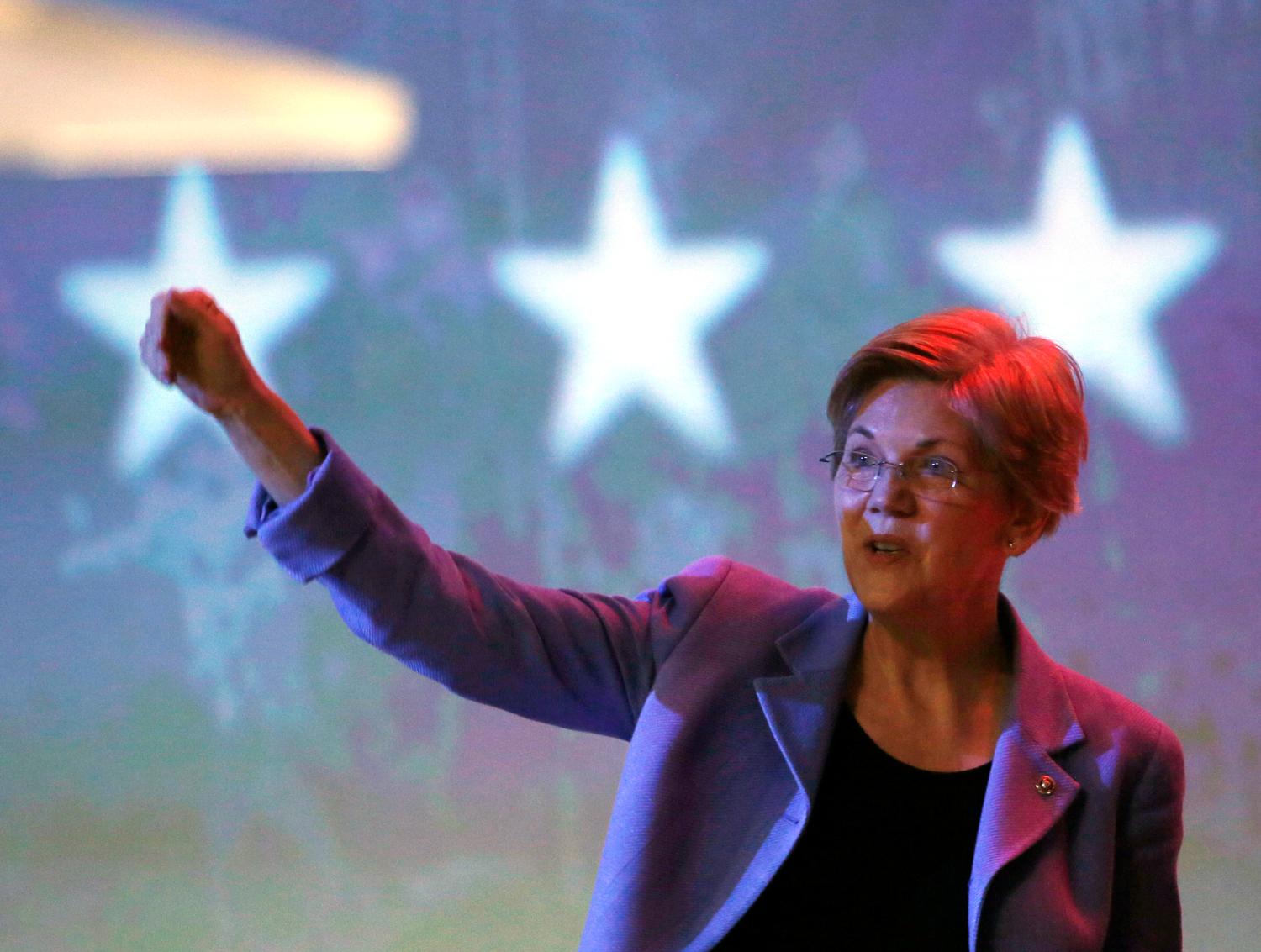Student loans make billions of dollars for U.S. taxpayers, at least on paper. These profits attract frequent criticism from politicians, most recently in a letter to the Education Department by six U.S. senators led by Elizabeth Warren, who has previously called the profits “obscene” and “morally wrong.”
Does the U.S. government really make billions of dollars off the backs of student borrowers? Current debates on this issue devolve into an argument about accounting methods that pits the method that government budget analysts are required to use by the Federal Credit Reform Act (FCRA) against an alternative method called “fair value.” It turns out that no accounting method can end government profits on student loans, but a change to the loan program itself could.
Accounting Methods Debate
The FCRA accounting method says that federal loans make money for the government, while the fair-value method says they cost taxpayers money. In the most recent analysis by the Congressional Budget Office (CBO), FCRA shows a profit of $135 billion over 10 years, whereas fair-value shows a cost of $88 billion.[1] Put another way, FCRA shows a profit margin of 12 percent, whereas fair-value shows a subsidy rate of eight percent. (Unfortunately many estimates, including these, ignore administrative costs, which the CBO estimates at $35 billion over 10 years.)
The debate over which method is better comes down to whether the government should factor into its cost estimates “market risk,” which is essentially the risk that its budget projections will be wrong.[2] Those projections could turn out to be wrong for many reasons, such as a weaker than expected economy several years from now (keep in mind that student loans are typically repaid over 10 or more years). Even over a short period of time, budget predictions can swing wildly, with the CBO’s estimate of student loan profits over 10 years (using the FCRA method) falling from $110.7 billion in April 2014 to $47.2 billion in March 2015, less than a year later.[3] According to the CBO, this decrease in expected gains resulted from increases in expected loan defaults, administrative costs, and participation in income-based repayment programs.
Fair-value proponents argue that the government should calculate the cost of this risk to taxpayers and factor it into budget projections, just as lenders do in the private sector. These proponents specifically point to what Donald Marron of the Urban Institute calls FCRA’s “magic-money-machine problem,” in that it lets the government record a profit in today’s budget based on returns (e.g., interest payments) that are expected over a long period of time. It doesn’t make sense for the government to make a risky long-term bet and then spend the expected winnings today, but that’s exactly what FCRA allows it to do.
Fair-value critics argue that accounting for risk is unnecessary and will exaggerate the cost of federal lending programs. This is akin to what Marron calls fair-value’s “missing-money problem,” in that it ignores the fact that the government expects to make money on some risky endeavors such as making loans to college students. In Marron’s words, “FCRA counts the government’s fiscal chickens before they hatch, and fair value assumes they never hatch.”[4]
End Profits by Shifting Risk and Lowering Interest Rates
The risk inherent in any lending program is real, regardless of whether it is accounted for in the budgeting process. Who should bear that risk raises questions of fairness. Policymakers are objecting today to forecasted profits on student loans. But if too many students fail to repay, future policymakers may object to taxpayers footing the bill for delinquent borrowers. Because it is impossible to predict the future, it is impossible to set interest rates (and other borrowing terms) today that will ensure no profit is made, or loss incurred, on the loans.
This is true under any accounting rule. A loan program that breaks even under fair-value is often going to end up making a profit for taxpayers, but it could still produce a loss. Conversely, a loan program estimated to break even under FCRA is more likely to leave taxpayers holding the bag if more borrowers failed to repay their debts than expected, but could also still produce profits.
The solution to this conundrum is to shift most of the market risk onto borrowers as a whole, while continuing to protect individual borrowers through income-based repayment. If borrowers bear the risk of higher or lower overall repayment rates, then whether the government accounts for that risk or not becomes a moot point. By definition, the loan program breaks even for taxpayers.
This can be accomplished by reforming the federal student lending program to include a guarantee fund. Here’s how it would work: borrowers pay a fee when they take out a loan that goes into a trust fund used to cover the unpaid debts of borrowers who end up failing to repay.[5] At the end of the repayment period, any money remaining in the guarantee fund for that cohort of borrowers is returned, with interest, to the borrowers who repaid successfully.
For example, the government currently expects defaults equivalent to about 0.6 percent of loans made. By charging a fee of 2.4 percent, it would protect taxpayers from defaults up to four times what is expected. Under this system, the government never profits off of student loans, and only faces a loss if repayment rates are so unexpectedly low as to exhaust the guarantee fund.
In order to zero out government profits, interest rates would be significantly lower under this system.[6] The government currently draws much of its “profits” from the difference between student loan interest rates and its (lower) cost of borrowing. For example, each year the interest rate on loans for undergraduates is set at about two percentage points above the Treasury rate on 10-year loans. With a guarantee fund protecting taxpayers from defaults, students could pay an interest rate equal to the government’s cost of borrowing corresponding to the length of their loans. Current Treasury rates are 1.9 percent for a 10-year loan and 2.4 percent for a 20-year loan, both significantly less than the 4.7 percent undergraduates pay.[7]
A guarantee fund for student loans is not a new idea. In the 1920s, a philanthropic foundation launched a “trial of making loans on business terms to college students, with character and group responsibility as the basis of credit.”[8] The “group responsibility” component was a guarantee fund which the foundation used to ensure that the money it committed to student loans “is protected by the borrowers themselves at actual cost.”[9] The foundation noted that this was akin to an insurance program in which “the excess cost of losses is borne by the members of the group in the form of reduced earnings on their premiums.”
This interesting early experiment made an average of $1 million in loans per year (in today’s dollars). The current federal loan program, which makes over $100 billion in loans per year to any college student who asks for one, is far larger and more complicated. Incorporating a guarantee fund would require a number of policy decisions, such as the size of the fee needed and how to distribute refunds given that different borrowers repay over different lengths of time. This policy feature might also entail increased administrative costs.
But a guarantee fund would also have some advantages beyond protecting students from government profits and taxpayers from losing money on bad loans. The current system is a mish-mash of cross-subsidies of different groups of borrowers. For example, both the FCRA and fair-value accounting methods estimate that profits made on loans to graduate students help cover the losses made on loans to some undergraduates. The guarantee fund could be segmented into different pools of borrowers, with higher-risk pools covering their own costs, or policymakers could make an explicit decision to keep these cross-subsidies.
The political benefits of a guarantee fund could end up being more important than its policy benefits. First, it would stop today’s politicians from fanning the flames of a student loan crisis by pointing to government profits on student loans, and tomorrow’s politicians from attacking the program when it starts producing losses.[10] Second, it would let politicians take credit for reducing interest rates on student loans while not putting taxpayer money at risk. And finally, this policy could help nudge the prevailing narrative around student lending from a “students vs. the government” to a “we’re in this together” mentality.
A guarantee fund would not solve all of the problems facing the federal student lending system, much less higher education more broadly. But in combination with other reforms, such as simplification of loan receipt and repayment, it could boost the long-term economic and political sustainability of a policy tool that has opened the university gates to millions of students.
Note: I thank Donald Marron for helpful comments on an earlier draft of this post. Any remaining errors are my own.
[1] The estimated profit/cost varies by type of student loan. PLUS loans to parents and graduate students make a profit under both calculations (albeit a smaller profit under fair-value), whereas subsidized Stafford loans to undergraduates have a cost under both methods (albeit a larger cost under fair-value). Unsubsidized loans to undergraduate and graduate students make a profit under FCRA but have a cost under fair-value.
[2] Both methods account for the projected risk that borrowers will not re-pay their loans.
[3] These totals are both for the 2015-2024 period and account for administrative costs.
[4] Marron also proposes a third accounting method called “expected returns” that he argues is superior to both FCRA and fair-value.
[5] In practice, borrowers already pay an origination fee on federal student loans. The current origination fee could be retained and set at the level needed to cover the administrative costs of the federal lending program. Both the origination and guarantee fund fees could be rolled into the balance of the loan.
[6] An alternative version of this policy that I do not discuss in detail is to use higher interest rates to fund the guarantee fund rather than a fee charged at origination (see Alex Holt of New America’s discussion of the tradeoff between origination fees and interest rates). In my view, a lower interest rate with a higher fee is more politically viable than a higher interest rate with a lower fee.
[7] Undergraduate interest rates would be about four percent if set today (the current rate is based on Treasury rates from last May). Additionally, the policy I discuss would not produce precisely zero profits/losses because loan terms are not always fixed and prepayment would reduce interest payments to the government. An alternative interest rate policy that would address this issue is to shift back to variable-rate student loans, which were the norm from the early 1990s until 2006.
[8] Harmon Foundation, “Seven Years’ Experience with Student Loans,” New York, 1929.
[9] In this program, the guarantee fund was financed by a fee charged during repayment rather than at origination of the loan.
[10] As a political matter, politicians and pundits tend to prefer whichever accounting method produces results they like the best. Examples abound of people who were against it before they were for it, and who were for it before they were against it. Democrats these days use FCRA estimates to argue for lower interest rates on student loans, but in earlier years railed against its use to calculate the costs of Social Security reform. Republicans tended to flip-flop in the opposite direction.
The Brookings Institution is committed to quality, independence, and impact.
We are supported by a diverse array of funders. In line with our values and policies, each Brookings publication represents the sole views of its author(s).





